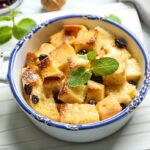For those adhering to a gluten-free diet, finding suitable pasta alternatives can be a delightful culinary adventure. Whether you have celiac disease, gluten sensitivity, or simply prefer to avoid gluten, there are numerous delicious and nutritious substitutes for traditional pasta. Here are five excellent gluten-free options to consider.
1. Zucchini Noodles (Zoodles)
Benefits:
Zucchini noodles, or “zoodles,” are a popular pasta substitute made by spiralizing fresh zucchini. They are low in calories, high in vitamins A and C, and rich in fiber and antioxidants.
Preparation:
To make zoodles, use a spiralizer, julienne peeler, or even a regular vegetable peeler to create long, thin strips of zucchini. You can enjoy them raw for a crisp texture or lightly sauté them in olive oil for a softer consistency.
Cooking Tip:
Zoodles pair well with a variety of sauces, from classic marinara and pesto to creamy avocado or lemon garlic dressings. Just be mindful not to overcook them to maintain their texture.
2. Spaghetti Squash
Benefits:
Spaghetti squash is a versatile vegetable that, when cooked, can be shredded into spaghetti-like strands. It is low in calories, gluten-free, and a good source of vitamins A and C, potassium, and dietary fiber.
Preparation:
Cut the squash in half, remove the seeds, and bake it cut-side down at 400°F (200°C) for about 40 minutes, or until tender. Once cooked, use a fork to scrape out the flesh into noodle-like strands.
Cooking Tip:
Spaghetti squash works well with hearty meat sauces, marinara, or even a simple garlic and olive oil drizzle. It absorbs flavors beautifully, making it a versatile base for various dishes.
3. Rice Noodles
Benefits:
Rice noodles are a staple in many Asian cuisines and are naturally gluten-free. They are made from rice flour and water, providing a neutral flavor that complements a wide range of dishes.
Preparation:
Rice noodles come in various thicknesses and can be found in most grocery stores. Cook them according to package instructions, typically by soaking in hot water until soft or boiling briefly.
Cooking Tip:
Use rice noodles in stir-fries, soups, or cold salads. They pair particularly well with soy-based sauces, peanut sauce, and curry broths.
4. Quinoa
Benefits:
Quinoa is a protein-rich grain that is naturally gluten-free and packed with essential amino acids, fiber, vitamins, and minerals. It has a slightly nutty flavor and a fluffy, slightly chewy texture.
Preparation:
Rinse quinoa thoroughly under cold water to remove its natural coating (saponin) that can taste bitter. Cook it in a 2:1 water-to-quinoa ratio, bringing to a boil and then simmering until the water is absorbed and the quinoa is tender (about 15 minutes).
Cooking Tip:
Quinoa can be used as a base for grain salads, as a stuffing for vegetables, or as a substitute for pasta in dishes like pasta salads and casseroles.
5. Chickpea Pasta
Benefits:
Chickpea pasta is made from chickpea flour and is a protein-rich, gluten-free alternative to traditional pasta. It is high in fiber, iron, and other essential nutrients, making it a nutritious choice.
Preparation:
Cook chickpea pasta according to the package instructions, usually by boiling in water for about 7-9 minutes. Be sure to rinse it well after cooking to remove any excess starch.
Cooking Tip:
Chickpea pasta has a hearty texture and pairs well with robust sauces like Bolognese, creamy Alfredo, or a simple tomato basil sauce. It also holds up well in baked pasta dishes and salads.
Embracing a gluten-free diet doesn’t mean you have to give up on the comforting and versatile nature of pasta dishes. By incorporating these delicious and nutritious alternatives—zucchini noodles, spaghetti squash, rice noodles, quinoa, and chickpea pasta—you can continue to enjoy your favorite meals while adhering to your dietary needs. Each option brings its unique flavor, texture, and health benefits, ensuring that your gluten-free culinary journey is both enjoyable and satisfying.








